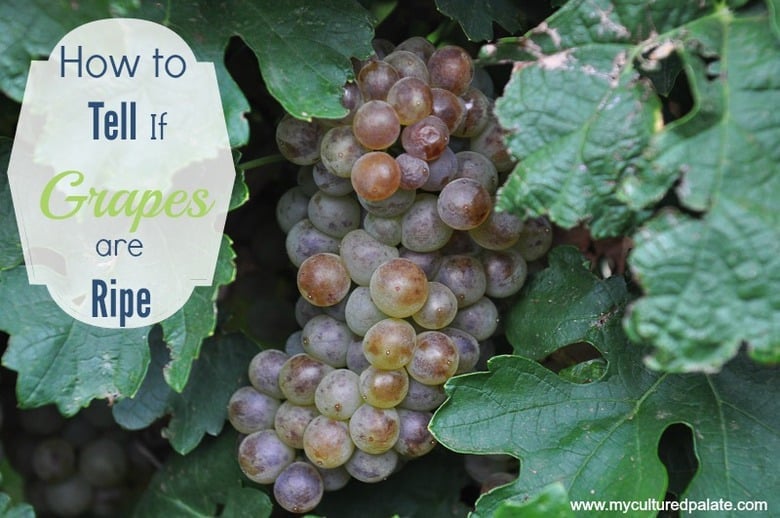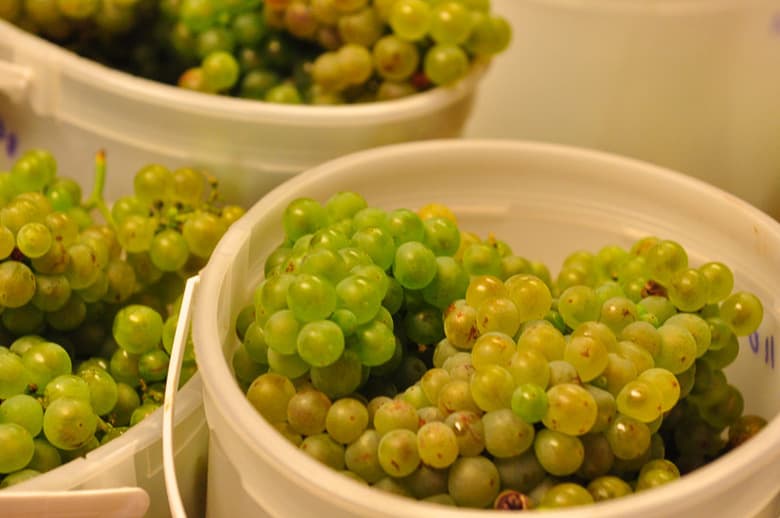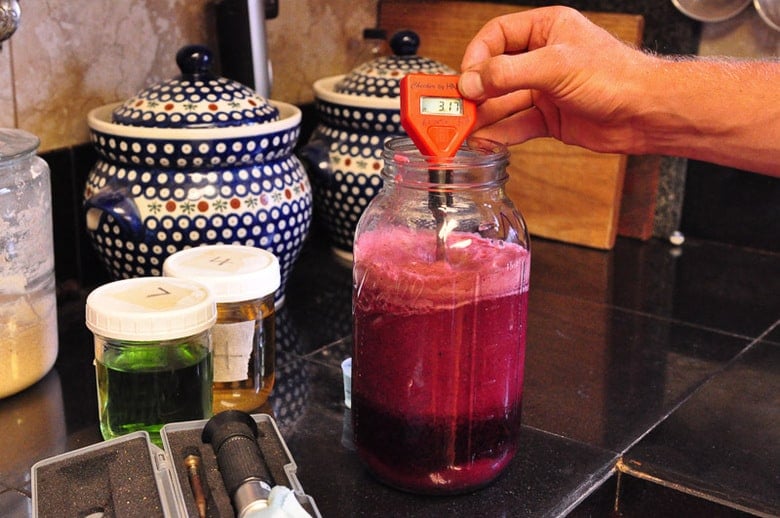pH and Brix Testing
How do you tell if a grape is ripe? If you answered, “by the taste”, you are right! You can also tell by pH and Brix testing.

But, there are also other measures of ripeness. For starters, there are the characteristics of the seeds. When grapes are unripe, the seeds are green and as they ripen they become tan and finally turn brown. Also, before ripening, the seeds are chewy and the pulp clings to the seeds. When ripe, the seeds become crunchy and the pulp no longer clings but separates easily.
If you are a winemaker, there are also other factors – chemistry stuff like pH and Brix.
The Tools We Use
We use two instruments, (both purchased from my affiliate partner) a pH meter and a refractometer. The pH meter is used to tell the pH level or acidity of the grapes. The refractometer measures the Brix which is the amount of sugar in the grapes. The wineries like to know the pH and Brix levels before harvest. So far this season, we have done 4 samples to find out how the ripening process is coming.
When we take samples, it is a random sample of 8 – 10 clusters per acre. It gives us a lot of exercise walking the rows! We predetermine which plants the clusters will be picked from and then alternate where on the vines the clusters are picked (above the cordon, below the cordon, to the right or to the left of the trunk). To further insure a random sample, the person is to stop at the predetermined plant and without looking, reach to the area to be sampled. Then, pick the first cluster touched. If you look at the plant, it is only natural to pick the best looking cluster (even if you are trying not to). But then the sample is no longer random.
Weigh the Grapes
Once the sample is gathered, the clusters are brought home, weighed and the juice is extracted. The weight of the clusters helps determine what the crop load is. Once we know that, the wineries know how many grapes to expect.

Juice the Grapes
To juice the grapes, we have always used a jelly masher (not really sure what you call it) that you can see John using in Grapes – Are They Ripe Yet? But, this year, I purchased a Breville juicer (affiliate link) that works great! We hang a towel from the shelf above to help deflect any seeds that are spit out. Since we are juicing so much at once, a lot of seeds get thrown out.

As you might guess, we have a lot of grape juice. It sure gets sweet as we get closer to harvest. But, no matter what the Brix, once added to John’s wine, it makes great sangria!
Test the Juice – pH Meter and Refractometer
Once the grapes are juiced, we use a pH meter that you see in the below photo and insert it into the juice. Oh, but before we do, the pH meter is calibrated with the two different solutions you see in the small jars to the left. The large glass jar to the far left is sourdough starter (which has nothing to do with testing the grapes but I thought you might be curious). We then use a refractometer (seen on the counter in front of the small jars) to test the Brix.

The final step – after clean up – is to notify the wineries.
The first of our varieties that will be harvested is the Roussanne, a French white grape. The Roussanne is contracted with 7 different wineries and each have their parameters for harvest. As of yesterday, the Brix were 21 – 24 depending upon the acre tested. We typically have higher pH values here on the high plains of west Texas. Ideally, the wineries would like the pH to be well under 4.0. With the Roussanne though, it is a waiting game since the pH rises as the Brix and the characteristic flavor of the grapes develop.
It is exciting to see the culmination of the year’s work moving toward harvest!

4 Comments